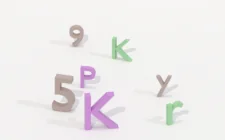This project is the SadCaptcha TikTok Captcha Solver API client. The purpose is to make integrating SadCaptcha into your Selenium, Playwright, or Async Playwright app as simple as one line of code. Instructions for integrating with Selenium, Playwright, and Async Playwright are described below in their respective sections. This API also works on mobile devices (Appium, etc.).
This tool works on both TikTok and Douyin and can solve any of the four captcha challenges pictured below:
- Python >= 3.10
- If using Selenium - Selenium properly installed and in
PATH - If using Playwright - Playwright must be properly installed with
playwright install - If using mobile - Appium and opencv must be properly installed
- Stealth plugin - You must use the appropriate
stealthplugin for whichever browser automation framework you are using.- For Selenium, you can use undetected-chromedriver
- For Playwright, you can use playwright-stealth
This project can be installed with pip. Just run the following command:
pip install tiktok-captcha-solver
Import the package, set up the SeleniumSolver class, and call it whenever you need.
This turns the entire captcha detection, solution, retry, and verification process into a single line of code.
It is the recommended method if you are using selenium.
from tiktok_captcha_solver import SeleniumSolver
from selenium_stealth import stealth
import undetected_chromedriver as uc
driver = uc.Chrome(headless=False) # Use default undetected_chromedriver configuration!
api_key = "YOUR_API_KEY_HERE"
sadcaptcha = SeleniumSolver(
driver,
api_key,
mouse_step_size=1, # Adjust to change mouse speed
mouse_step_delay_ms=10 # Adjust to change mouse speed
)
# Selenium code that causes a TikTok or Douyin captcha...
sadcaptcha.solve_captcha_if_present()It is crucial that you use undetected_chromedriver with the default configuration, instead of the standard Selenium chromedriver.
Failure to use the undetected_chromedriver will result in "Verification failed" when attempting to solve the captcha.
Import the package, set up the PlaywrightSolver class, and call it whenever you need.
This turns the entire captcha detection, solution, retry, and verification process into a single line of code.
It is the recommended method if you are using playwright.
from tiktok_captcha_solver import PlaywrightSolver
from playwright.sync_api import Page, sync_playwright
from playwright_stealth import stealth_sync, StealthConfig
api_key = "YOUR_API_KEY_HERE"
with sync_playwright() as p:
browser = p.chromium.launch(headless=False)
page = browser.new_page()
config = StealthConfig(navigator_languages=False, navigator_vendor=False, navigator_user_agent=False)
stealth_sync(page, config) # Use correct playwright_stealth configuration!
# Playwright code that causes a TikTok or Douyin captcha...
sadcaptcha = PlaywrightSolver(
page,
api_key,
mouse_step_size=1, # Adjust to change mouse speed
mouse_step_delay_ms=10 # Adjust to change mouse speed
)
sadcaptcha.solve_captcha_if_present()It is crucial that users of the Playwright client also use playwright-stealth with the configuration specified above.
Failure to use the playwright-stealth plugin will result in "Verification failed" when attempting to solve the captcha.
Import the package, set up the AsyncPlaywrightSolver class, and call it whenever you need.
This turns the entire captcha detection, solution, retry, and verification process into a single line of code.
It is the recommended method if you are using async playwright.
import asyncio
from tiktok_captcha_solver import AsyncPlaywrightSolver
from playwright.async_api import Page, async_playwright
from playwright_stealth import stealth_async, StealthConfig
api_key = "YOUR_API_KEY_HERE"
async def main()
async with async_playwright() as p:
browser = await p.chromium.launch(headless=False)
page = await browser.new_page()
config = StealthConfig(navigator_languages=False, navigator_vendor=False, navigator_user_agent=False)
await stealth_async(page, config) # Use correct playwright_stealth configuration!
# Playwright code that causes a TikTok or Douyin captcha...
sadcaptcha = AsyncPlaywrightSolver(
page,
api_key,
mouse_step_size=1, # Adjust to change mouse speed
mouse_step_delay_ms=10 # Adjust to change mouse speed
)
await sadcaptcha.solve_captcha_if_present()
asyncio.run(main())It is crucial that users of the Playwright client also use playwright-stealth with the stealth configuration specified above.
Failure to use the playwright-stealth plugin will result in "Verification failed" when attempting to solve the captcha.
Currently there is no premade solver for Mobile/appium, but you can implement the API with relative ease.
The idea is that you take a screenshot using the mobile driver, crop the images, and then send the images to the API.
Once you've done that, you can consume the response.
Here is a working example for Puzzle and Rotate captcha.
keep in mind, you will need to adjust the captcha_box and offset_x varaibles according to your particular mobile device.
from PIL import Image, ImageDraw
import base64
import requests
# SOLVING PUZZLE CAPTCHA
BASE_URL = 'https://www.sadcaptcha.com/api/v1'
LICENSE_KEY = ''
puzzle_url = f'{BASE_URL}/puzzle?licenseKey={LICENSE_KEY}'
def solve_puzzle():
# Screenshot of page
driver.save_screenshot('puzzle.png')
full_image = Image.open('puzzle.png')
# Full puzzle image - adjust box to your device
captcha_box1 = (165, 1175, 303, 1330)
captcha_image1 = full_image.crop(captcha_box1)
# Draw circle over left side to occlude the puzzle piece in the main image
draw = ImageDraw.Draw(captcha_image1)
draw.ellipse([(0, 0), (captcha_image1.width / 4, captcha_image1.height)], fill="blue", outline="blue")
captcha_image1.save('puzzle_screenshot.png')
# Puzzle piece image - adjust box to your device
captcha_box2 = (300, 945, 1016, 1475)
captcha_image2 = full_image.crop(captcha_box2)
captcha_image2.save('puzzle_screenshot1.png')
with open('puzzle_screenshot.png', 'rb') as f:
puzzle = base64.b64encode(f.read()).decode()
with open('puzzle_screenshot1.png', 'rb') as f:
piece = base64.b64encode(f.read()).decode()
data = {
'puzzleImageB64': puzzle,
'pieceImageB64': piece
}
r = requests.post(puzzle_url, json=data)
slide_x_proportion = r.json().get('slideXProportion')
offset_x = 46 + (46 * float(slide_x_proportion))
driver.swipe(start_x=55, start_y=530, end_x=55 + int(offset_x), end_y=530, duration=1000)
time.sleep(3)
# SOLVING ROTATE CAPTCHA
BASE_URL = 'https://www.sadcaptcha.com/api/v1'
LICENSE_KEY = ''
rotate_url = f'{BASE_URL}/rotate?licenseKey={LICENSE_KEY}'
def solve_rotate():
driver.save_screenshot('full_screenshot.png')
full_image = Image.open('full_screenshot.png')
captcha_box1 = (415, 1055, 755, 1395)
captcha_image1 = full_image.crop(captcha_box1)
mask = Image.new('L', captcha_image1.size, 0)
draw = ImageDraw.Draw(mask)
circle_bbox = (0, 0, captcha_image1.size[0], captcha_image1.size[1])
draw.ellipse(circle_bbox, fill=255)
captcha_image1.putalpha(mask)
captcha_image1.save('captcha_image_circular.png')
captcha_box2 = (318, 958, 852, 1492)
captcha_image2 = full_image.crop(captcha_box2)
mask2 = Image.new('L', captcha_image2.size, 0)
draw = ImageDraw.Draw(mask2)
draw.ellipse((captcha_box1[0] - captcha_box2[0], captcha_box1[1] - captcha_box2[1],
captcha_box1[2] - captcha_box2[0], captcha_box1[3] - captcha_box2[1]), fill=255)
captcha_image_with_hole = captcha_image2.copy()
captcha_image_with_hole.paste((0, 0, 0, 0), (0, 0), mask2)
captcha_image_with_hole.save('captcha_image_with_hole.png')
with open('captcha_image_with_hole.png', 'rb') as f:
outer = base64.b64encode(f.read()).decode('utf-8')
with open('captcha_image_circular.png', 'rb') as f:
inner = base64.b64encode(f.read()).decode('utf-8')
data = {
'outerImageB64': outer,
'innerImageB64': inner
}
r = requests.post(rotate_url, json=data)
r.raise_for_status()
response = r.json()
angle = response.get('angle', 0)
result = ((286 - 55) * angle) / 360
start_x = 55
start_y = 530
offset_x = result
driver.swipe(start_x, start_y, start_x + int(offset_x), start_y, duration=1000)SadCaptcha supports using proxies and custom headers such as user agent. This is useful to avoid detection. To implement this feature, pass your proxy URL and headers dictionary as a keyword argument to the constructor of the solver.
api_key = "YOUR_API_KEY_HERE"
proxy = "http://username:[email protected]:80"
headers = {"User-Agent": "Chrome"}
# With Selenium Solver
driver = uc.Chrome(headless=False) # Use default undetected_chromedriver configuration!
api_key = "YOUR_API_KEY_HERE"
sadcaptcha = SeleniumSolver(driver, api_key, proxy=proxy, headers=headers)
# With Playwright Solver
with sync_playwright() as p:
browser = p.chromium.launch(headless=False)
page = browser.new_page()
stealth_sync(page) # Use default playwright_stealth configuration!
sadcaptcha = PlaywrightSolver(page, api_key, proxy=proxy, headers=headers)
sadcaptcha.solve_captcha_if_present()
# With Async PlaywrightSolver
async def main()
async with async_playwright() as p:
browser = await p.chromium.launch(headless=False)
page = await browser.new_page()
await stealth_async(page) # Use default playwright_stealth configuration!
sadcaptcha = AsyncPlaywrightSolver(page, api_key, headers=headers, proxy=proxy)
await sadcaptcha.solve_captcha_if_present()If you are not using Selenium or Playwright, you can still import and use the API client to help you make calls to SadCaptcha
from tiktok_captcha_solver import ApiClient
api_key = "YOUR_API_KEY_HERE"
client = ApiClient(api_key)
# Rotate
res = client.rotate("base64 encoded outer", "base64 encoded inner")
# Puzzle
res = client.puzzle("base64 encoded puzzle", "base64 encoded piece")
# Shapes
res = client.shapes("base64 encoded shapes image")
# Icon (Video upload)
res = client.icon("Which of these objects... ?", base64 encoded icon image")This common problem is due to your browser settings.
If using Selenium, you must use undetected_chromedriver with the default settings.
If you are using Playwright, you must use the playwright_stealth package with the default settings.
Do not change the user agent, or modify any other browser characteristics as this is easily detected and flagged as suspicious behavior.
- Homepage: https://www.sadcaptcha.com/
- Email: [email protected]
- Telegram @toughdata


